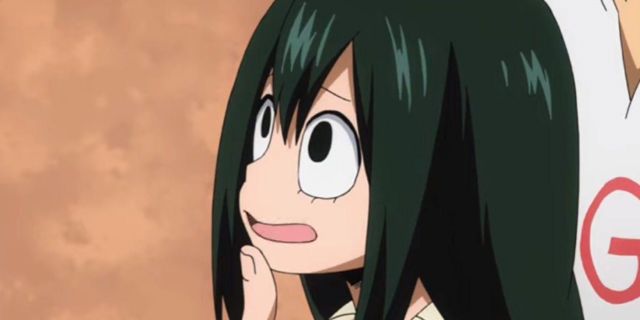My Hero Academia features an ensemble cast of characters, most of them either caped pro heroes or students at the esteemed UA school for trainee heroes. This means that author Kohei Horikoshi had to design a large handful of characters up front to keep protagonist Izuku Midoriya company, and class 1-A has a remarkable diversity of students in it.
Those students are a mix of boys and girls, melee fighters and support heroes, and more. Of course, many class 1-A characters underwent serious changes from their original concepts to the final design, including changing a few characters’ genders. Most of all, Toru Hagakure the invisible girl and Tsuyu Asui were originally envisioned as male characters.
Some MHA Character Designs Changed for the Final Product
Many of class 1-A’s best students were envisioned as something totally different at first, such as the sweet Ochaco Uraraka having Mt. Lady’s Quirk or Denki Kaminari having a villainous design. Other characters changed on a more fundamental level, such as their gender, and such is the case for Toru and Tsuyu. Both of them were originally intended to be male characters, but author Kohei Horikoshi determined that class 1-A had enough male students by then, so he decided to mix things up. He changed Toru and Tsuyu to girls, bringing the total number of class 1-A female students to six. That’s still fewer than class 1-B’s eight female students, but it still helped balance class 1-A a little better in that regard.
Horikoshi also changed Toru into a female character for more comedic reasons. Aside from giving class 1-A more girls, he changed the invisible boy into the invisible girl mostly because he found the idea of an invisible girl more amusing. Ironically, Toru is a bit of a genki girl and a bubbly deredere like Marin Kitagawa in My Dress-Up Darling, but for all the attention she gets, Toru cannot be truly “seen” due to her invisible body. She draws people’s attention, only for them to see absolutely nothing. Meanwhile, it’s not clear if changing Tsuyu into a girl significantly changed her personality or her Quirk, but MHA fans are so used to the big sisterly frog girl that they now can’t imagine class 1-A having a frog boy.
Interestingly, My Hero Academia has a third character whose gender changed during the design stage, though it’s not a class 1-A student but rather, the brilliant but wacky Mei Hatsume from the Department of Support in class 1-H. Mei was going to be a male student, only to end up in her current female form. Here again, it’s not 100% clear if changing this character from male to female significantly impacted Mei’s design, but MHA fans love this hardworking mechanic girl, and at this point, they wouldn’t have it any other way.
My Hero Academia Needed Plenty of Female Characters
Understandably, as a shonen anime series, My Hero Academia made its most prominent characters male, including the golden trio of Izuku Midoriya, Katsuki Bakugo and Shoto Todoroki, along with the symbol of peace All Might and the supervillain All For One. Still, this anime takes place in a school, and given that UA isn’t an all-boys academy, it needs some female characters to be plausible. Typical co-ed schools are made up of a roughly 50/50 gender ratio, and if UA has enough female students like Toru, Tsuyu and Nejire Hado for fans to meet, then it feels more realistic and better-rounded. This isn’t a training camp for wannabe shonen heroes — it’s a proper in-universe school where parents send their sons and daughters to learn the ways of heroism.
Sheer realism isn’t the only reason to make sure classes 1-A and 1-B have a decent number of female students in them — there are also issues of inspiration and empowerment. In Japan, shonen and shojo anime are aimed at younger consumers who need role models and positive messages in their media, so My Hero Academia‘s author gave the girls a fair chance to shine. The results may be imperfect, but Horikoshi still gave Izuku enough female classmates so that female viewers can see themselves in any of these diverse girls, from the genius Momo Yaoyorozu to the responsible Tsuyu Asui or the energetic, carefree Mina Ashido.
In addition, meeting an unofficial quota of female characters sends a positive message to male viewers, reminding them that girls can accomplish all the same things that they can, and that girls are obviously worth having as friends and teammates in a hero-oriented school like UA. This helps normalize female characters as a substantial part of any shonen anime’s story and cast of characters, and a co-ed school is a perfect place to drive that point home, frog girls and all.















Leave a Reply